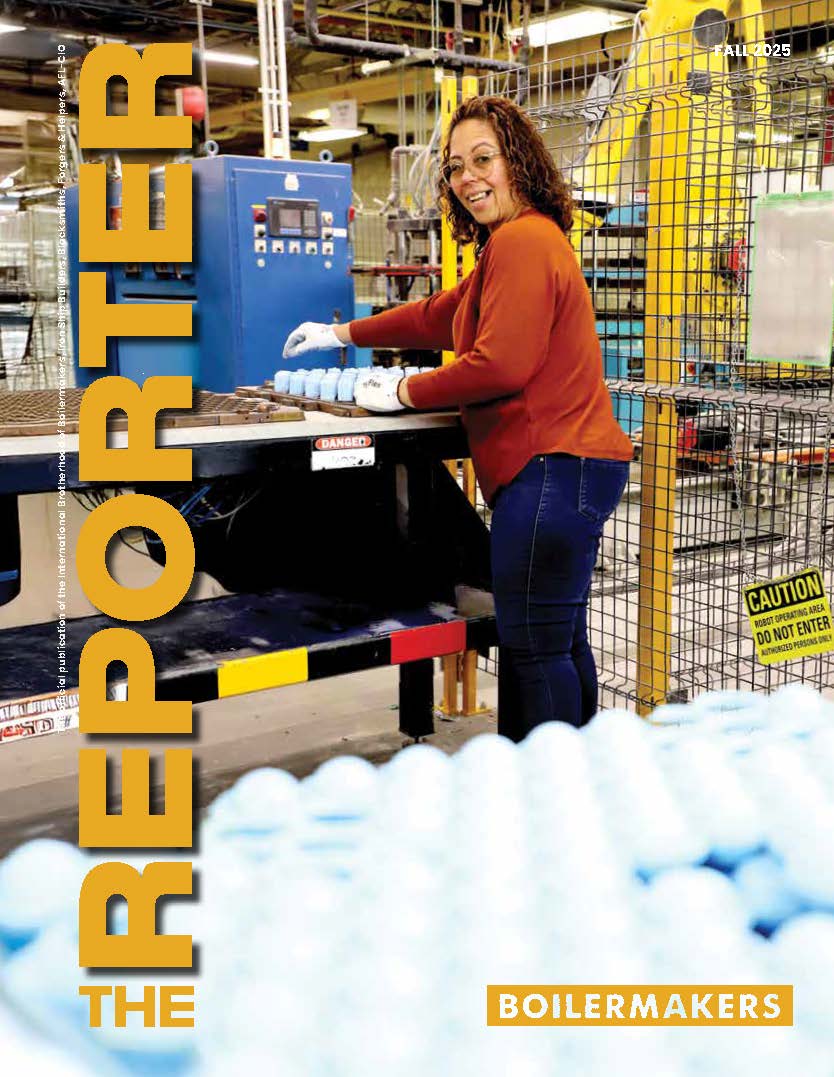Speakers stress balancing carbon limits with job, economic protections
Under the cap and trade system being considered for carbon emissions, the government would auction off allowances. An allowance is a legal right to emit the gas. In some cases, allowances may be given freely to industries that need them. The allowances can be traded or sold by carbon producers. Such a system provides a financial incentive for companies to reduce their carbon output and promotes efficiency.
Beginning in the early 1990s, under amendments to the Clean Air Act, the United States successfully employed a cap-and-trade approach to reduce acid rain caused by sulfur dioxide (SO2) emissions.
FOUR PANELISTS DRAWN from the environmental movement, Congress, and industry shared their thoughts about energy and climate change during the LEAP conference April 17.
They included John Mimikakis, senior policy manager for the Environmental Defense Fund; James Bradbury, representing the office of Rep. Jay Inslee (D-WA 1st); Paul Bailey, president of national affairs for the American Coalition for Clean Coal Electricity; and Joe Schultz, from the office of Sen. Sherrod Brown (D-OH).
The group discussed some of the pressing issues facing the United States as the nation grapples with how to fashion policy and enact laws that will limit greenhouse gas emissions without damaging the economy and destroying jobs.
The national debate on energy and climate change has grown more urgent with the Environmental Protection Agency likely to classify carbon dioxide and other greenhouse gases as pollutants under the Clean Air Act. If it does so, the EPA must then set enforcement regulations to limit the gases. Such a move could have far-reaching consequences for industry and commerce.
Following are excerpts from the panel discussion.
MIMIKAKIS: “This is a unique moment in American history to get something done [about global warming]. We have a scientific alignment, an economic alignment, a political alignment, and an emerging business alignment. Our number one goal is that the U.S. gets started on reducing emissions steeply enough and seriously enough to really meet the challenge.
”A second concern . . . is making sure that whatever policy we adopt is sustainable. We don’t think it’s any good if Congress passes a law today if it’s going to be repealed or undermined in five years.
“The third principle is we can’t offshore our jobs. Not only would that be economically bad, but as an environmental group we recognize that would be bad environmentally. If we offshore jobs to a country that does not have regulations, that does not help the environment, and it doesn’t help the economy.”
BRADBURY: “There are a lot of industries in the country that face certain risks as we impose . . . what is fair to be called unilateral carbon pricing. There are some countries in the world that we compete against . . . that won’t be taking comparable action at the same time. But certainly Rep. Inslee believes the U.S. should lead in this matter.
”What we’ve been working on, in particular, with Mike Doyle of Pittsburgh [Rep. Mike Doyle, 14th Dist. of Penn.] is something called output-based rebating. This is designed to allow free allowances [to emit carbon dioxide] to certain sectors of industry that are particularly trade-exposed and energy-intensive, such as steel, aluminum, glass, and cement. The impact is to avoid carbon leakage and job leakage — the main issues we’re concerned with — where we would send production overseas to countries that are less regulated.
“There are other proposals that warrant consideration. There’s the border tax adjustment [a proposal to tax foreign goods shipped to the U.S. if the countries exporting those goods do not regulate greenhouse gases]. I think these other proposals can work in tandem with what we are proposing.”
BAILEY: “[If the EPA rules that greenhouse gases are pollutants], they will probably go after the transportation sector first. Eventually, they’ll turn to the people I represent [energy providers and large energy users]. So we’d like to see the right kind of legislation as soon as we can get it. I think at the end of the day we’ll end up with a cap and trade system. I think it’s the right thing to do.
“To comply with [new limits on carbon emissions], we would need to build more than a couple hundred new power plants over a period of 15-20 years [and] double our nuclear capacity in the next 20-30 years. That’s an enormous amount of construction activity.
“We’re betting the ranch on carbon capture and sequestration. [CSS technology essentially strips CO2 from coal, either pre-combustion or after it is burned in a boiler, and then separates it for long-term storage.]. If this technology works properly, this is the least costly way to reduce CO2 throughout the economy. Maybe 70 percent of the reductions are going to come from power plants.
“I cannot emphasize enough how difficult this [greenhouse gas reduction] is going to be. The media…oversimplify what’s going on.”
SCHULTZ: “Climate change is not just about the environment, and it’s not just about the planet. It’s also about our energy security, and most importantly, it’s about jobs.
“This is going to be a tremendous challenge and opportunity for our economy, especially for our states that are dependent on coal, that are focused on manufacturing. Every time you build a commercial-scale wind turbine, you use enough steel to build 250 midsized sedans. Every time you turn on a light bulb that’s powered by solar panels, you use enough glass to replace a car windshield. If every home was insulated at the current Department of Energy recommended levels, we’d need an additional 34 million tons of insulation in this country. That’s a lot of jobs.
“We can’t have this debate without talking about what this does for American jobs. When the Lieberman-Warner bill came before the U.S. Senate last June, Sen. Brown had to vote no, because the details weren’t right. The details make the difference as to whether this is a job-creating bill or a job-killing bill.”









